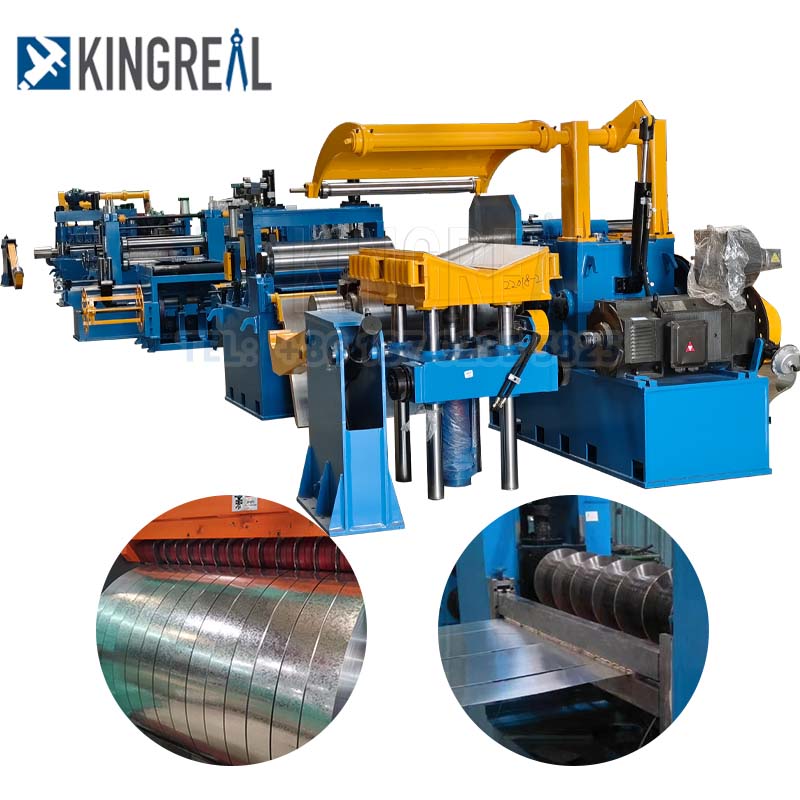The working principle of slitting machine equipment
2024-06-15
A slitting machine, also known as a slitter or slitting line, is a piece of industrial equipment used to cut large rolls of material (such as paper, plastic film, metal foil, or textiles) into narrower strips. The working principle of a slitting machine involves several key components and steps:

1. Unwinding:
- Unwind Station: The process begins with the unwinding of the master roll (also known as the jumbo roll) of material. The master roll is placed on an unwind stand or unwinding station, which holds the roll and feeds it into the machine.
- Tension Control: Proper tension control is crucial to ensure that the material is fed into the slitting section smoothly without wrinkles or breaks. This can be achieved through mechanical or electronic tension control systems.
2. Slitting Section:
- Slitting Mechanism: The material passes through the slitting section, where it is cut into narrower strips. There are two primary types of slitting mechanisms:
- Rotary Slitters: Consist of rotating circular knives (or slitting blades) that cut the material as it passes through. This type is commonly used for high-speed operations and precise cuts.
- Razor Blade Slitters: Utilize stationary razor blades to slit the material. This type is often used for thinner materials and simpler applications.
- Knife Adjustments: The distance between the slitting knives can be adjusted based on the desired width of the final strips. Precise alignment and sharpness of the knives are critical for achieving clean cuts.
3. Rewinding:
- Rewind Station: After the material is slit, the narrower strips (now referred to as slit rolls or coils) are rewound onto individual cores at the rewinding station.
- Rewind Tension Control: Similar to the unwinding process, tension control during rewinding ensures that the slit rolls are wound uniformly and tightly. This prevents issues like telescoping or slack winding.
- Rewind Drums: The machine may have multiple rewind drums or shafts to accommodate the slit strips. Each slit strip is rewound onto its own core, creating multiple smaller rolls from the original master roll.
4. Edge Trim Removal:
- Trim Handling: During slitting, edge trim waste is generated. This waste material is usually collected and removed through trim handling systems, which may include suction systems, blowers, or conveyors.
5. Control Systems:
- Automation and Precision: Modern slitting machines are equipped with advanced control systems that automate various aspects of the process, including tension control, knife positioning, and speed regulation. These systems enhance precision, efficiency, and safety.
6. Inspection and Quality Control:
- Inspection Systems: Some slitting machines are equipped with inspection systems to monitor the quality of the material and the accuracy of the slitting process. These systems can detect defects, misalignments, or variations in the material.
Steps of the Slitting Process
1. Setup: The master roll is loaded onto the unwind station, and the slitting knives are set to the required positions based on the desired strip widths.
2. Unwinding: The master roll begins to unwind, and the material is fed into the slitting section.
3. Slitting: The material passes through the slitting knives, which cut it into narrower strips.
4. Rewinding: The slit strips are rewound onto individual cores at the rewind station.
5. Completion: Once the entire master roll is processed, the slit rolls are removed from the machine, and the process is complete.
Applications
- Packaging: Producing narrow rolls of packaging material such as plastic film, paper, or foil.
- Printing: Slitting large rolls of printed material into smaller widths for various printing applications.
- Textiles: Cutting wide fabric rolls into narrow strips for use in garments or other textile products.
- Metal Processing: Slitting metal coils into narrower strips for use in manufacturing and construction.
In summary, the working principle of a slitting machine involves the careful coordination of unwinding, slitting, and rewinding processes to convert large rolls of material into narrower, more manageable strips, while maintaining precision and quality throughout the process.


